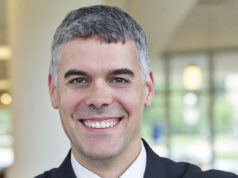“For every complex problem, there is an answer that is clear, simple, and wrong.”
Every time I think about trying to solve the complex problems of surgical workforce, I am reminded of that great line from H.L. Mencken.
Some of our troubles began in 1975, when we tried to estimate the need for a surgical workforce. In the Report on the Manpower Subcommittee, written for the Study on Surgical Services for the United States, Dr. F.D. Moore called for moderating (that is, lowering) the output of surgical residents: “Better to have birth control, that is to say, control of the total residency programs, than abortion” (Ann. Surg. 1975;182:526-30). By that, he meant we should control the numbers coming in rather than have more failures by the American Board of Surgery. He was in favor of limiting output.
Similarly, COGME (Council of Graduate Medical Education) in 1992 also recommended fewer specialists and more primary care. In its Summary of the Third Report, Improving Access to Health Care Through Physician Workforce Reform: Directions for the 21st Century, COGME recommended reducing the number of physicians entering residency from 140% to 110% of the number of graduates of medical schools in the United States in 1993 and increasing the percentage of graduates who complete training and enter practice as generalists from the then-current level of 30% to 50%.
COGME was authorized by Congress in 1986 to provide an ongoing assessment of physician workforce trends, training issues, and financing policies, and to recommend appropriate federal and private sector efforts to address identified needs. Its authority was removed and it was disbanded in 2004 in part because its projections were wrong so many times that its recommendations had to be reversed.
Many individuals have criticized the recommendations that there are too many physicians and particularly surgeons in the country. Some of the most vocal critics, and some with the best actual data, are Dr. George Sheldon, Dr. Thomas Ricketts, and Dr. Richard Cooper.
I believe there is little question that we have a maldistribution of the surgical workforce, particularly in the rural setting, and we also have an absolute “undersupply” to address the nation’s surgical needs. What compounds this undersupply is the Balanced Budget Act of 1997, which put a ceiling on the number of residency slots paid for through Medicare.
In the current era of tighter Congressional fiscal control, I am not optimistic that the federal government will make available more money for graduate medical education. In fact, there is a continual threat that the current allocations for GME under Medicare will be reduced. Alternatives must be sought, and the one that comes to mind for most is an “all users fee” (actually a tax) that might include insurance carriers, hospitals, nursing homes, and so on.
Work by Dr. Atul Gawande and his colleagues indicates that the average American undergoes nine invasive procedures in a lifetime: three endoscopies, three outpatient procedures, and three inpatient procedures. I have already used up all of mine, so I am definitely looking for answers.
How can we pay for what we need, encourage young people to join the profession, attract students who are very lifestyle conscious, and keep the high standard and ethos we were brought up with? One of the consistent complaints surgical leaders hear from the men and women actually delivering surgical care is how poorly trained some graduates are when they become practicing surgeons. My friends in private practice say that this as one of our most serious workforce issues.
I recently had the opportunity to learn about a small group of surgical educators who are applying the “Ashley” rule, named after Stan Ashley when he was chairman of the American Board of Surgery. The Ashley rule gives flexibility to surgical trainees to “major” in certain subspecialties of surgery during their residency. Research being spearheaded by Dr. Mary Klingensmith, an ACS Fellow at Washington University in St. Louis, consists of a group of nine training programs across the country that will be used to study application of the Ashley rule. This self-appointed group has taken on the responsibility of trying to fix a least one part of the vast workforce issue we have through a new “innovation.”
This is how the group describes innovation: “In this training paradigm, graduates will be able to spend additional months of training in their area of interest, will be able to spend this focused time sooner than traditional fellowship training allows, and will streamline and improve the experiences for all trainees in a single program as each will be afforded a more ‘customized’ training experience [including rural surgery]. As a result, graduates will finish training with additional clinical experience in their area of intended eventual practice; the likely effect of this has two primary outcomes: First, graduates will possess greater comfort with independent practice immediately following training, an issue that has been raised with some graduates of surgical programs since the advent of the duty hour restrictions; second, graduates will be better prepared to provide quality surgical care to their patients, with improved outcomes.”
This new research is a refinement of the work many of us did as part of the American Surgical Association Blue Ribbon Committee on Surgical Education, which led to this recommendation: “There needs to be acceptance of the reality that most surgeons will confine the scope of their practices to meet definable goals. This should lead to earlier differentiation into goal-oriented specialty tracks” (Ann. Surg. 2005;241:1-8).
The new work may not solve all of the issues confronting surgical education in the United States, but it’s an important start by serious surgical educators. It will be interesting to watch and see how this work develops.
Dr. Zinner is an ACS Fellow and surgeon in chief at Brigham and Women’s Hospital in Boston.

Dr. Michael Zinner










